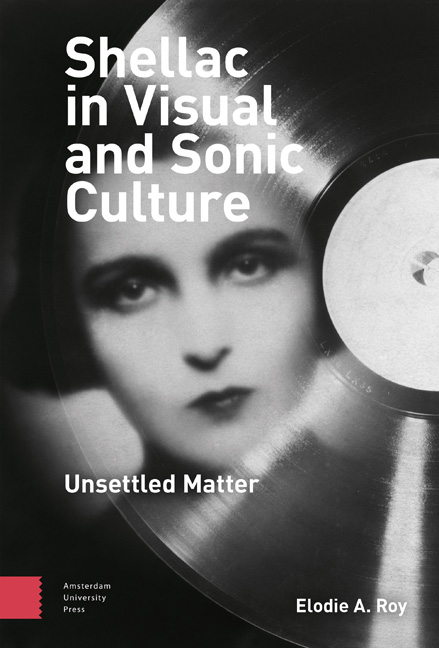Book contents
- Frontmatter
- Contents
- List of illustrations
- Acknowledgements
- Introduction: From material culture to the materials of culture
- 1 Sheen: Early stories and circulation of shellac
- 2 Crackle: Assembling the record
- 3 Mirrors: Phono-fetishism and intersensory visions
- 4 Detonations: Shellac at war
- 5 Shards: Waste, obsolescence, and contemporary remediations
- Conclusion: Sonic sculptures
- Bibliography
- Index
Introduction: From material culture to the materials of culture
Published online by Cambridge University Press: 17 February 2024
- Frontmatter
- Contents
- List of illustrations
- Acknowledgements
- Introduction: From material culture to the materials of culture
- 1 Sheen: Early stories and circulation of shellac
- 2 Crackle: Assembling the record
- 3 Mirrors: Phono-fetishism and intersensory visions
- 4 Detonations: Shellac at war
- 5 Shards: Waste, obsolescence, and contemporary remediations
- Conclusion: Sonic sculptures
- Bibliography
- Index
Summary
Abstract:
The introductory chapter surveys the main theoretical concerns and themes underpinning the book as well as giving a brief historical overview of what shellac is. It gives insights into the chosen methodological framework, surveying what the implications of following the mutable materials – and stories – of media cultures are. Rather than focusing on finite media objects and practices of consumption, the introduction highlights what an emphasis on materials and processes might mean for the study of media cultures.
Keywords: media archaeology, materiality, ecology, narrativity, shellac
In the Spring of 1936, the London Shellac Research Bureau celebrated shellac at its India House headquarters in Central London. One of the windows of India House offered a modest yet carefully curated display of shellac-based artefacts (see Figure 1 below). The material, a thermoplastic of insect origin imported from British India, appeared in its various sizes and guises, ranging from tiny soluble flakes held in fragile glass vials to finished commodities such as bowls and hats. Among the everyday objects featured in the window display, gramophone discs – perhaps the most iconic and best-known of all shellac-based artefacts – occupied a prominent position. Emile Berliner's shellac discs had been introduced in the second half of the 1890s. By the 1930s, as is still the case today, shellac was principally and most spontaneously associated with audiophilic pleasures and the enticing black sheen of records, more closely relating to the realm of sound rather than to vision. In 1935, half of the shellac that England imported was to manufacture gramophone records and the material, which had previously been consumed by ‘the highly industrialised countries of Europe and America’, now attracted new clients such as Japan and Russia. India was the first – and almost sole – worldwide producer of shellac before the Second World War, providing 90% of the global supply and processing the remainder. At the time, the multinational gramophone industry represented the main single consumer of shellac in the world, absorbing over one third of the annual output. Shellac cultivation was almost exclusively concentrated in the region of Bihar, with smaller production areas in the United Provinces, Bengal and the Central Provinces.
- Type
- Chapter
- Information
- Shellac in Visual and Sonic CultureUnsettled Matter, pp. 11 - 38Publisher: Amsterdam University PressPrint publication year: 2023



